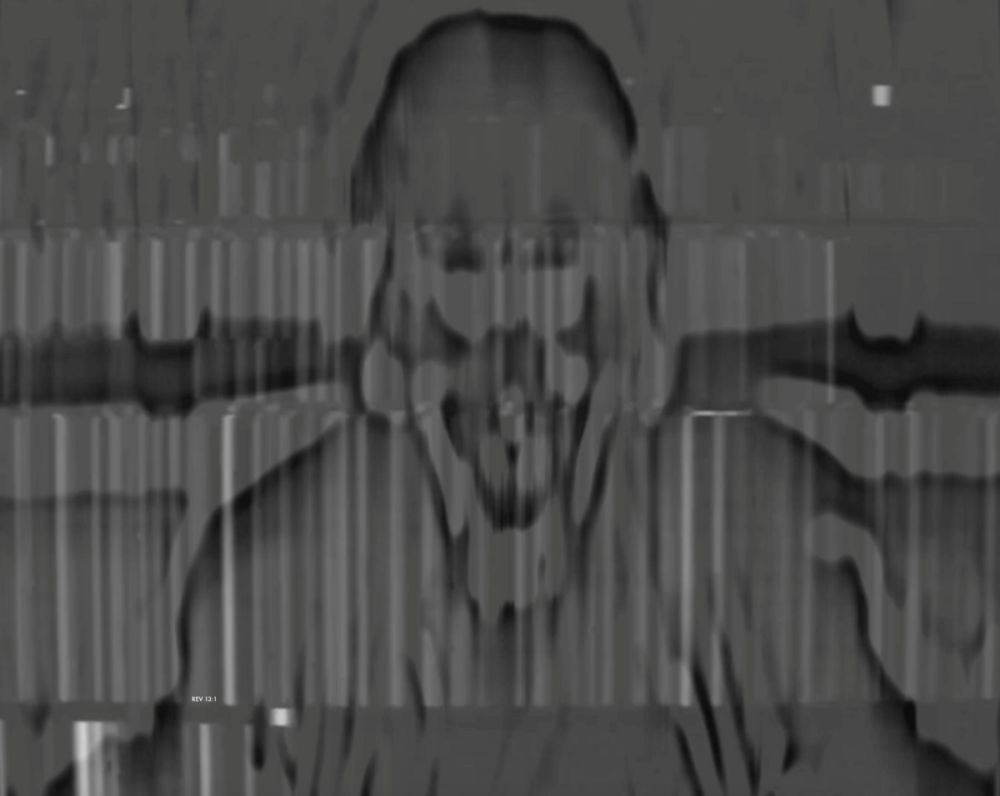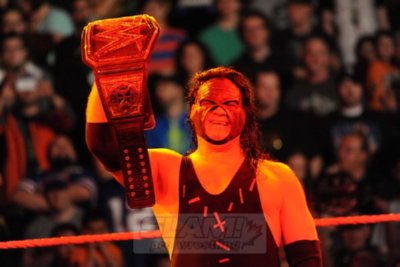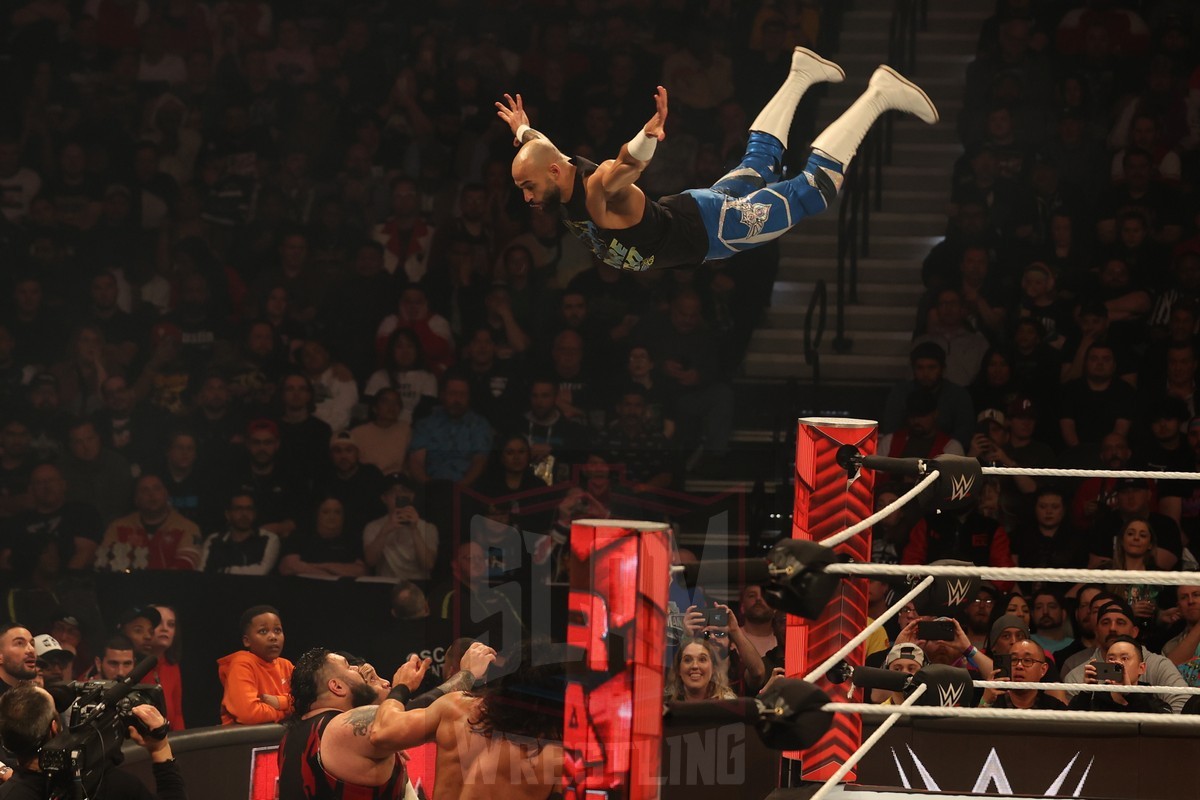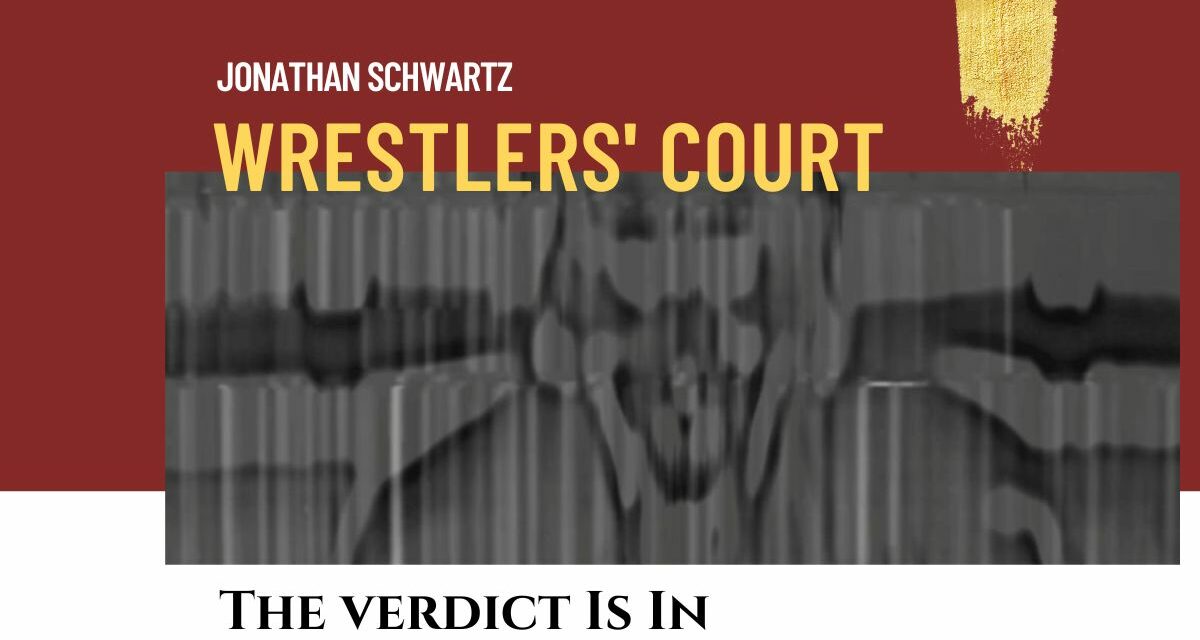Over the past week or so I have written two columns considering the impending debut of the character Uncle Howdy and his apparent faction, originally known as the Wyatt 6. I noted the challenges that may come with bringing these characters to life without their leader and creator (Windham Rotunda, aka Bray Wyatt). I also offered examples from wrestling and other forms of entertainment where the show went on despite the loss of a critical character or actor.
I suspect that this is where WWE is headed with Uncle Howdy (played by Windham’s real-life brother Taylor, the former Bo Dallas). Despite the faction’s no-show at the recent King and Queen of the Ring pay-per-view, WWE’s QR code teasers have become more openly disruptive. The character has ‘hijacked’ WWE’s social media feeds and most recently, took over its entire website. The ‘mysterious’ content has included short films and long-form poetry laden with carny and genre references.
Last week, an Uncle Howdy message was posted on WWE.COM with a possible date of June 17 for a return. The URL on the WWE.com post read “71enuj” which is June 17 backwards. June 17 is a Monday with the post-Clash at the Castle Raw live from the American Bank Center in Corpus Christie, Texas. “I accepted my calling. Only then was I able to set the others free,” part of the message reads. “We are going to burn it to the ground. A massacre is coming.”
Monday, June 3 brought yet another QR code, plus the following message which aired during the bumper for RAW Talk: “I have shown you signs and wonders. Yet you do not believe? I offered you hope. Freedom from the pit. You spit in my face. Mock my family. Question my timing. One last chance, an opportunity to repent. But my patience runs thin. There is a reckoning coming. Your belief is indifferent. It is inevitable. You will learn you are finite. And you shall all behold what we have become. A massacre is coming.”

The weird symbol that appeared on WWE.com on June 3, 2024.
Somehow, all of this will continue to draw from Wyatt’s pocket of the multiverse.
After watching a recent Mike Rotunda interview (wherein he spoke at length about Windham’s love of Stephen King, confirming a hunch I’ve mentioned repeatedly), I wonder how far they can take the extra-dimensionality of the character. Does Uncle Howdy travel along a ‘thinny’ — a weakness in the fabric of time and space that bridges gaps between worlds? This device was used for outright horror in IT, as a conduit in the epic Dark Tower series and as the McGuffin in King’s anti-historical JFK book 11/22/63. If Howdy is linked to Bray even beyond death, would his push within the WWE Universe bring new meaning to the term ‘Shine’?
But I digress.
Uncle Howdy’s success will depend on a few factors: How readily can he (and Bo Dallas) transition from a foil to a main character? How quickly and easily will audiences accept a replacement (especially where WWE is swapping out a well-known character with established lore for one who is still mostly lore)? How will WWE treat the character of Bray Wyatt in-universe to explain his absence, especially given Wyatt’s roots in supernatural horror? If (big if) Wyatt is written out of WWE angles going forward, why is Uncle Howdy sticking around?
Pro wrestling doesn’t lend itself to serial antagonists. Characters who are introduced solely to feud with a given superstar tend to have short shelf lives. Kane is an exception — but he was given the chance to grow beyond the grindhouse to interact with a broader range of wrestlers, including a brief World Championship run. Brian Lee’s Fake Undertaker, Terry Gordy’s Executioner and even Drew Hankinson’s Fake Kane prove the rule.

Kane as the WWE champion.
I have already compared wrestling and horror tropes but I left one out: in horror the villain never truly dies. There is always the possibility that he will return to massacre survivors from the first installment or find a new group to terrorize. An alien hides aboard a spaceship bound for earth. A hand breaks the surface of the lake where the antagonist ‘drowned’. A vampire cruises down the highway in a blacked-out car.
The prospect that Bray Wyatt may yet outlive Windham Rotunda raises interesting questions for the Wyatt 6, WWE’s approach to storytelling, and perhaps for pro wrestling in general. If Wyatt can somehow continue to exist within WWE continuity — either abstractly or as a physical presence, would his involvement suggest that at some point we can have pro wrestling with the actual wrestlers as an afterthought?
Thinking about how WWE might pull this off, it’s worth going into a bit more detail about the tricks that Hollywood has used to convincingly reanimate a departed cast member to help finish a story. Bela Lugosi’s death derailed some of Ed Wood’s film projects, but he salvaged enough random material and B-roll footage from other movies that he could weave it into Plan Nine from Outer Space without upsetting that film’s already loose continuity. Wood found a stand-in to complete Lugosi’s scenes and shot around the stand-in’s different appearance. Like the rest of Wood’s oeuvre, it was about as do-it-yourself as it gets. Decades on, the film still charms audiences despite its many technical flaws.
More serious movies have developed strategies to get around a cast member’s departure or demise. The Harry Potter franchise simply recast Dumbledore when original player Richard Harris died after filming the second movie. Michael Gambon took over the role for the balance of the series. Underneath flowing robes and copious makeup and a large prosthetic beard, audiences barely registered the difference.
As disruptive as a lead actor’s death may be, production crews have been able recalibrate and decide whether to continue the franchise and elevate different characters to lead roles. In 2013 Paul Walker died in a single-vehicle crash while filming Furious 7. The movie was completed after portions were rewritten to explain his absence. Walker’s character was retired from the franchise but allowed to live out his days in peace. New scenes were created so the series could move forward without him. Where Walker was needed for group shots his brothers Cody and Caleb stood in. Developing computer technology allowed his face to be superimposed over his brothers’ or another actor’s, using a combination of a computer-generated image of Walker’s face and actual footage taken from outtakes and other movies. Producers decided that the rewrites should admit the possibility of continuing the franchise. As a result, the Fast and the Furious series has increasingly revolved around the likes of Jason Statham and Dwayne Johnson since Paul Walker’s death.

Sting at the Contest of Champions: Where Heroes Gather fan fest, on Saturday, December 3, 2022, at RWJBarnabas Health Arena, in Toms River, NJ. Photo by George Tahinos, https://georgetahinos.smugmug.com
A similar approach was taken in The Crow. Actor Brandon Lee died on the set following an accident with a prop handgun. Lee had filmed most of his scenes. To complete the film, stunt doubles were used as stand-ins, with Lee’s face superimposed over theirs using nascent computer imaging technology. The Crow premiered in 1994. In 1996, a loose sequel entitled The Crow: City of Angels was released with Vincent Perez playing a different character with the same story arc. Further direct-to-video sequels followed in 2000 and 2005 to diminishing returns. The original plot was revisited in a Canadian TV series. As I write this, a full reboot starring former Pennywise Bill Skarsgard is set to be released in August 2024. I suggest that in most cases producers might wish to forgo the rushed sequels and give the franchise a chance to rest before rebooting; The Crow sequels were lousy but they suffered from comparisons to the original, and the perception that the franchise was trying to monetize Lee’s tragic death. (Wrestling-wise, The Crow did inspire Sting’s reinvention.)
The technical know-how to bring dead characters back to life has been around for a while now. It’s not far off the computer-generated imagery (CGI) that made for convincing dinosaurs in the Jurassic Park franchise or the recent spate of live-action Disney reboots of animated films. CGI is more than sophisticated enough to fool viewers in short doses. As far back as the 1994 movie Forrest Gump creators have manipulated images and soundbites to give the impression that historic figures (in Gump’s case, President Lyndon Johnson and Beatle John Lennon) interact with current performers. The last batch of Star Wars movies featured a digital likeness of actress Carrie Fisher, who died during production. The recent DC Comics movie The Flash manipulated the images of historic superhero actors including Adam West and Burt Ward (TV’s Batman and Robin), Lynda Carter (Wonder Woman) and George Reeves, Christopher Reeve and Nicholas Cage (all of whom played different versions of Superman). In 2012 the late rapper Tupac Shakur appeared on stage as a hologram at the Coachella music festival. Eight years later insane clown sans-posse Kanye West conjured up a more advanced hologram of then-spouse Kim Kardashian’s father Robert as a birthday gift. West ensured the long-dead Kardashian dad spoke highly of him. The couple divorced anyway.
Today Artificial Intelligence and so-called ‘deepfake’ technologies are so convincing and readily available that celebrities need to address unflattering photos and videos that appear online. Of course, one early application of this super-realistic imaging technology is pornography-manipulating images of people in degrading ways. The business of AI will grow up, even if its users don’t.

Bray Wyatt, Bo Dallas and their father, Mike Rotunda, at the Legends of the Ring fan fest on Saturday, June 11, 2022, at the Apa Hotel, Iselin, NJ. Photo by George Tahinos, https://georgetahinos.smugmug.com
I can see how movie magic could keep Bray Wyatt involved in angles going forward. WWE’s library must contain hours upon hours of footage and voice samples from across Windham Rotunda’s career. Bray Wyatt was a supernaturally-inflected, reality-bending character as evidenced by his cinematic match against John Cena during the pandemic WrestleMania. Wyatt could play a role in Uncle Howdy’s story arc as a disembodied voice, a ghost presented in vignettes or even in the ring-played by another performer in full costume and mask, or if technology allows as a hologram. It wouldn’t be a stretch to imagine WWE finding a new use for an existing intellectual property asset, especially one that readily assumes an altered state.
I am not opposed to Uncle Howdy’s return and the possibility that Windham Rotunda’s and Bray Wyatt’s legacies get at least one more chapter. I am concerned about how Rotunda’s voice or image could be used to fuel this return, and what other applications may be in store — especially for a performer who was known to be protective of his character and its use. That would raise serious questions about WWE performers’ ownership of and compensation for their likenesses. These questions have already been raised in the context of the ever-expanding trove of content available across streaming services, for which performers receive little if any compensation. One of the key issues in the recent Hollywood actors’ strike was how actors’ likenesses could be used forever by studios without compensation beyond their initial time in front of a camera. This seems similar to musicians’ complaints that royalty payments for streaming services like Spotify are miniscule compared to what they receive for physical media. Wrestlers complain on social media that they do not receive compensation for matches shown on streaming services. Some have argued that they never signed away rights to their images, even as their territories’ archives were acquired by WWE. Others claim that whatever contracts may have been signed did not contemplate the advent of streaming, much less advances in CGI.
Pro wrestling is known for stingy compensation for all but it’s top-earning performers, even in legacy media. In the territory days whole promotions’ histories were wiped out from month to month as promoters taped over earlier broadcasts as a money-saving measure. At the time, TV shows were basically commercials for live events running across the territory’s circuit. But the COVID-19 pandemic showed that big-business wrestling can survive if not thrive without that live component. Wyatt himself showed that freed from the limitations of live theatre, “pro wrestling” can be radically expanded and people will pay to see it.
I would hate for a successful Wyatt experiment to pave the way for entirely computer-animated angles or matches. Going back to the dino-fights in Jurassic Park, the battle scenes in Zack Snyder’s 300 or the Wachowskis’ innovative mix of practical and special effects in the Matrix movies, the standard for action has shifted dramatically. WWE has invested heavily in motion-capture to make moves look more real in its video game properties. Character realism took a leap forward in the early 1990s with the Mortal Kombat series of games and hasn’t looked back. I’m not much of a gamer but I can be drawn in to play (or watch, as video gaming has become a spectator sport in its own right) where the fighters look ‘real’ and the action truly defies the laws of physics. The New Day’s Xavier Woods has established his own brand as an avid gamer with his UpUpDownDown podcast.

Number One Contender Match for WWE World Heavyweight Championship Title: Jey Uso vs. Ricochet vs. Bronson Reed vs. Drew McIntyre at WWE Monday Night Raw at the Wells Fargo Center in Philadelphia, PA, on April 8, 2024. Photo by George Tahinos, georgetahinos.smugmug.com
Today, when we talk about next-level professional wrestlers we mean people like Ricochet or Swerve Strickland or Will Ospreay (heck, even Logan Paul) whose offence owes more to video games than rest holds. As great as modern wrestlers are, it would be hard to compete with a more interactive, high-resolution, all-action battle between pixelated pro wrestlers. Even better, an avatar-based approach to wrestling would mean nobody really gets hurt. Travel would be minimized and costs to produce events would plummet since there’s no actual circus to move from town to town. It would be an entirely different business model at the highest echelon of the sport.
As a strong believer in the value of a live connection between performer and audience, this idea is a horror. Much as I would have loved to see Bret Hart fight Kurt Angle or Sting face The Undertaker, I would rather acknowledge those missed opportunities than see them as computerized simulations before a passive audience.
I believe it is possible to pull some kind of electronic resurrection off, but I am mindful of Chaos Theorist Dr. Ian Malcolm’s words in the book (and film) Jurassic Park: “Your scientists were so preoccupied with whether or not they could, they didn’t stop to think if they should.”
TOP PHOTO: The weird symbol that appeared on WWE.com on June 3, 2024.
RELATED LINKS


